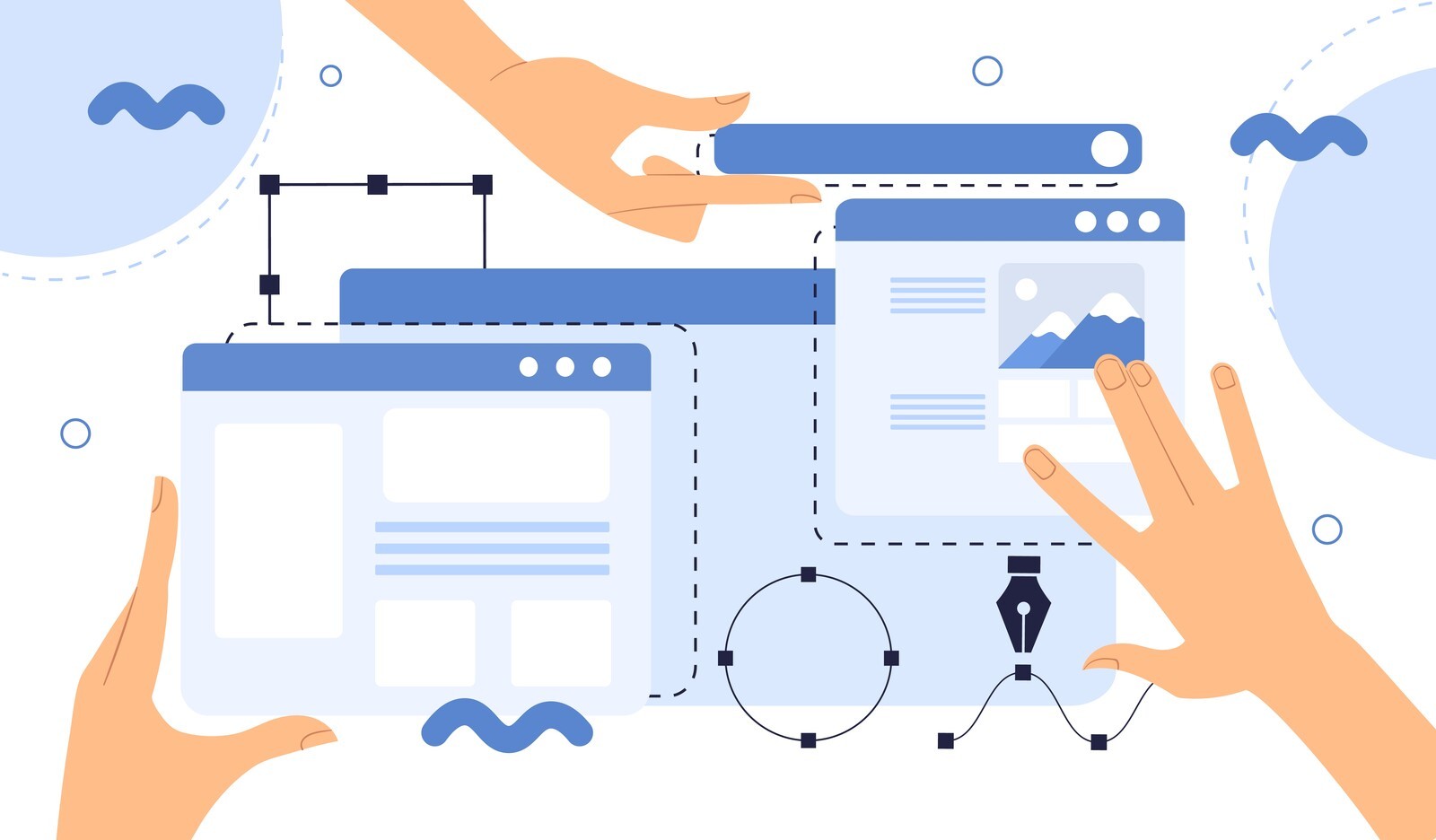Project Management serves as the backbone of successful project delivery, ensuring that web development projects meet their objectives within the constraints of time, budget, and quality. Effective project management enables teams to navigate the complexities of developing websites and applications, aligning with the ever-changing demands of clients and the market.
Among the myriad of project management methodologies, Agile and Waterfall stand out as primary strategies, each with its unique approach to managing web development projects.
Agile, known for its flexibility and iterative nature, focuses on customer collaboration and responding to change, making it ideal for projects where requirements are expected to evolve. On the other hand, Waterfall offers a more structured and sequential approach, where each phase of the project flows into the next, providing a clear roadmap from start to finish. These methodologies not only shape the workflow and team dynamics but also influence the project's outcome and success.
Purpose of Project Management in Web Development
Project management in web development is the discipline of using established principles, procedures, and policies to manage a project from its inception through to its completion. It encompasses the organization, planning, and controlling of resources and tasks to achieve specific web development goals, ensuring projects are delivered on time, within budget, and to the agreed quality standards.
This function is critical in navigating the complexities of web development projects, which often involve multiple stakeholders, rapidly changing technologies, and evolving user expectations.
The significance of project management in web development cannot be understated. It provides a framework that enables teams to work more efficiently and effectively, addressing issues promptly and making informed decisions.
By establishing clear objectives and benchmarks, project management helps in mitigating risks, optimizing resource allocation, and enhancing communication among team members and with clients. This leads to the timely and efficient delivery of web development projects, ultimately resulting in satisfied clients and end-users.
Key Components of Effective Project Management
Effective project management in web development is built on four key components: Planning, Execution, Monitoring, and Closure. Each component plays a vital role in the project's lifecycle, ensuring its successful completion.
- Planning: This initial stage involves setting project goals, defining scope, and identifying resources, timelines, and potential risks. Planning sets the foundation for the project, outlining a roadmap for achieving objectives and ensuring all team members understand their roles and responsibilities.
- Execution: Execution is the phase where the planned activities are carried out. It involves coordinating people and resources, as well as integrating and performing the activities of the project in accordance with the project management plan. This phase is where the development work happens, from coding and designing to content creation and testing.
- Monitoring: Monitoring involves tracking the project's progress, ensuring it remains on schedule and within budget. This continuous process includes measuring performance, identifying any variances from the plan, and implementing changes as necessary to address issues or risks. Effective monitoring helps maintain control over the project, allowing for adjustments that keep the project aligned with its objectives.
- Closure: The closure phase marks the completion of the project. It involves finalizing all activities, such as testing, deployment, and release, ensuring all project deliverables have been achieved. This phase also includes conducting post-project evaluations to identify lessons learned and best practices for future projects.
These components form the foundation of effective project management in web development, guiding teams through the complexities of bringing web projects from conception to completion. By adhering to these principles, project managers can ensure that their projects are delivered successfully, meeting or exceeding stakeholder expectations.
The Agile Methodology
Agile project management is a dynamic and iterative approach that emphasizes flexibility, team collaboration, and customer satisfaction. Originating from the Agile Manifesto, it advocates for adaptive planning, evolutionary development, early delivery, and continual improvement, all while encouraging rapid and flexible response to change.
This methodology is particularly suited to projects where requirements are expected to evolve, and the end product needs to be developed in incremental stages.
Key Characteristics of Agile Project Management
- Iterative Development: Agile breaks down the project into small, manageable units called iterations or sprints, allowing teams to focus on high-quality development, testing, and collaboration.
- Customer Collaboration: Regular feedback from clients or end-users is integrated throughout the development process, ensuring the final product meets their needs and expectations.
- Adaptive Planning: Agile project management is responsive to changes, allowing plans to be adjusted as the project progresses rather than strictly adhering to a fixed baseline.
- Cross-Functional Teams: Agile promotes collaboration among all team members, with roles often overlapping, ensuring a multidisciplinary approach to problem-solving.
Benefits of Using Agile Project Management
- Flexibility: Agile’s iterative nature allows for changes in project scope and requirements, accommodating new ideas and user feedback throughout the development process.
- Adaptability: Agile teams can quickly respond to changes in the market or project scope, ensuring the project remains relevant and competitive.
- Continuous Feedback: Regular review sessions with stakeholders and continuous testing ensure that the project aligns with client needs and quality standards, reducing the risks of post-deployment issues.
Implementing Agile in Your Projects
Adopting Agile methodology requires a shift in mindset and operations for most teams, especially those used to more traditional, linear approaches. Here are steps and practices to effectively implement Agile in your projects:
- Form Cross-Functional Teams: Assemble teams that include members with various expertise (developers, designers, testers, etc.) to ensure all aspects of the project can be addressed within the team.
- Define Iterations: Break down the project into smaller, manageable iterations or sprints, with each focusing on delivering a piece of the product.
- Establish a Product Backlog: Create a prioritized list of project requirements and tasks, known as a product backlog, which guides the work for each sprint.
- Conduct Regular Stand-ups: Hold daily stand-up meetings to discuss progress, address any impediments, and plan for the day.
- Use Agile Boards: Implement Agile boards (physical or digital) to visualize work progress during sprints, enhancing transparency and communication.
- Hold Sprint Reviews and Retrospectives: At the end of each sprint, review the work completed and discuss what was learned, what went well, and what could be improved.
Tools and Practices for Effective Agile Management
- Agile Project Management Software: Tools like Jira, Trello, and Asana can help manage sprints, backlogs, and workflows, providing visibility and collaboration features.
- Continuous Integration/Continuous Deployment (CI/CD): Automate the testing and deployment processes to ensure rapid, reliable releases.
- Test-Driven Development (TDD): Emphasize writing tests before coding, ensuring each feature meets quality standards before moving forward.
Implementing Agile methodology in web development projects not only enhances project flexibility and adaptability but also promotes a culture of continuous improvement and client engagement. By embracing Agile principles and practices, teams can navigate the complexities of web development with greater efficiency and success.
The Waterfall Methodology
The Waterfall methodology is a sequential project management approach where each phase must be completed before the next begins. This linear and structured method is characterized by its strict order of operations, which typically includes conception, initiation, analysis, design, construction, testing, deployment, and maintenance.
Originating from traditional manufacturing and construction workflows, Waterfall is best suited for projects with well-defined requirements and where changes are not expected to occur frequently.
Key Characteristics of Waterfall Project Management
- Sequential Phases: Projects move through a series of distinct phases in a linear fashion, with each phase dependent on the deliverables of the previous one.
- Upfront Requirements: All project requirements are defined at the beginning of the project, allowing for detailed planning and design before any development begins.
- Limited Client Involvement: Unlike Agile, client involvement primarily occurs at the beginning and end of the project, with less emphasis on continuous collaboration.
- Documentation Focus: Waterfall methodologies place a strong emphasis on documentation at each stage of the project, ensuring a clear and detailed record of all aspects.
Advantages of Waterfall Project Management
- Clear Project Timelines: The linear approach of Waterfall allows for clear, predefined project timelines, making it easier to track progress and milestones.
- Defined Deliverables: Each phase has specific deliverables, which helps in setting clear expectations and achieving well-defined project objectives.
- Easier to Manage Budgets: With the scope, timeline, and resources defined early in the project, budget management becomes more straightforward, reducing the likelihood of unexpected expenditures.
When to Choose Waterfall for Your Web Development Project
Waterfall is particularly well-suited for web development projects where requirements are clear and unlikely to change. This includes projects such as:
- Static Websites: Sites with a fixed content structure where requirements can be fully defined upfront.
- Compliance-Driven Projects: Projects that require thorough documentation and adherence to strict regulatory standards.
- Large Projects with Clear Objectives: Projects with well-understood objectives that benefit from detailed planning and a phased approach.
Planning and Executing a Waterfall Project
- Requirement Analysis: Begin with a comprehensive analysis to gather all necessary requirements and document them in detail.
- System Design: Based on the requirements, design the system architecture, user interface, and database models.
- Implementation: Develop the website or application according to the specifications outlined in the design phase.
- Testing: After development, thoroughly test the product for any defects or issues, ensuring it meets the initial requirements.
- Deployment: Once testing is complete and the product is deemed ready, proceed with the deployment to a live environment.
- Maintenance: After deployment, enter the maintenance phase, where any necessary updates, bug fixes, and performance improvements are made.
Choosing the Waterfall methodology for your web development project involves careful consideration of the project’s scope, complexity, and objectives. When selected for the right type of project, Waterfall can provide a high degree of control and predictability, making it an effective approach for achieving specific, well-defined goals.
Agile vs Waterfall: Making the Right Choice
When it comes to managing web development projects, choosing between Agile and Waterfall methodologies can significantly impact the project's success. Both approaches have their merits, but they cater to different types of projects and team dynamics. Understanding their differences and how they apply to various aspects of project management is crucial for making an informed decision.
Direct Comparison of Agile and Waterfall
-
Project Scope and Requirements Flexibility: Agile is designed for projects where the scope and requirements are expected to evolve. It allows for flexibility and adapts to changes throughout the project lifecycle. Waterfall, on the other hand, requires a fixed scope and clear requirements from the beginning, making it less adaptable to change.
-
Size and Complexity of the Project: Agile is well-suited for projects of any size, but it shines in complex projects where iterative testing and feedback can significantly enhance the final product. Waterfall is more suited for simpler, well-defined projects where the end product can be clearly visualized from the start.
-
Team Collaboration and Communication: Agile promotes continuous collaboration among all team members and with stakeholders, facilitating a high level of communication. Waterfall involves less frequent communication with stakeholders, as most of the collaboration occurs during the planning stages.
Key Factors to Consider
Making the right choice between Agile and Waterfall depends on several key factors:
-
Your Project’s Goals and Deadlines: Consider what you are trying to achieve with your project and the timeline. Agile allows for more flexibility in both goals and delivery timelines, accommodating changes and unforeseen challenges. Waterfall is better for projects with a fixed deadline and clear, unchanging objectives.
-
The Level of Client Involvement: Agile requires and benefits from ongoing client involvement, providing feedback at each iteration. If your client prefers to be closely involved in the development process, Agile might be the preferred approach. Waterfall is suitable when the client expects to provide input primarily at the beginning and then receive a final product.
-
Risk Management and Quality Control: Agile’s iterative nature allows for early detection of issues, making it easier to manage risks and ensure quality throughout the development process. Waterfall, while having stringent quality control measures at the end of the development cycle, might not be as flexible in accommodating changes late in the project.
Deciding between Agile and Waterfall methodologies requires a thorough analysis of your project's specific needs, team dynamics, and stakeholder expectations. Consider these factors carefully to choose the approach that will best support your project’s success.
By aligning the project management methodology with the project’s characteristics and requirements, you can optimize your team's workflow, enhance collaboration, and increase the likelihood of delivering a successful web development project.
Best Practices for Project Management
Successfully managing web development projects requires more than just choosing the right methodology; it necessitates a comprehensive approach that encompasses planning, execution, and continuous improvement. Here are some best practices that can guide you in effectively managing web development projects:
Tips for Successfully Managing Web Development Projects
-
Establish Clear Objectives: Before the project begins, define clear, measurable objectives that align with your client's goals and expectations. This clarity will guide decision-making throughout the project.
-
Involve Stakeholders Early: Engage with stakeholders, including clients, team members, and end-users, early and often. Their input can provide valuable insights that shape the project’s direction and ensure the final product meets their needs.
-
Prioritize Communication: Maintain open lines of communication among all team members and stakeholders. Regular updates, meetings, and feedback sessions help in addressing issues promptly and keeping everyone aligned with the project's progress.
-
Embrace Change Management: Be prepared to manage changes effectively, whether they pertain to project scope, timelines, or objectives. Having a flexible approach and a process for handling changes can mitigate risks and keep the project on track.
-
Implement Quality Control Measures: Incorporate quality assurance practices from the start. Regular testing, code reviews, and adherence to coding standards ensure the delivery of a high-quality product.
-
Document Everything: Keep detailed records of project plans, meetings, changes, and communications. Documentation is crucial for understanding decisions made during the project and for future reference.
-
Evaluate and Reflect Post-Project: After project completion, conduct a retrospective analysis to identify what worked well and what could be improved. Lessons learned can be applied to future projects to enhance efficiency and effectiveness.
How to Choose the Right Methodology for Your Project
Choosing the right project management methodology is pivotal to the success of a web development project. Consider the following factors:
-
Project Size and Complexity: Evaluate the scale and complexity of the project. Agile is often better suited for larger, more complex projects requiring flexibility, while Waterfall might be the choice for smaller, clearly defined projects.
-
Stakeholder Involvement: Determine the level of involvement your stakeholders wish to have. Agile facilitates more frequent interaction and feedback, making it ideal for clients who prefer to be closely involved.
-
Risk Tolerance: Consider the project’s tolerance for risk and change. Agile allows for more adaptability to changes and can better manage risks due to its iterative nature. Waterfall might pose challenges in adapting to late changes.
-
Team Dynamics: Assess your team’s familiarity and experience with the methodology. The success of a project can depend on the team’s ability to effectively implement and work within the chosen framework.
-
Deadline and Budget Constraints: Analyze the project's deadline and budget. Waterfall can offer a more predictable timeline and budget estimate upfront, while Agile's flexible nature might lead to variations.
Incorporating these best practices and carefully selecting a project management methodology tailored to your project's specific needs can significantly enhance the outcome of your web development projects. By fostering a collaborative environment, maintaining flexibility, and emphasizing continuous improvement, you can navigate the challenges of web development and deliver projects that meet or exceed expectations.
Navigating Project Success
The selection of an appropriate project management methodology is not merely a procedural decision; it is a strategic one that can significantly influence the trajectory of a project's success. The journey through planning, execution, and delivery of web projects is laden with challenges and opportunities alike. Whether adopting the iterative and flexible Agile approach or the structured and sequential Waterfall model, the methodology chosen becomes the lens through which these challenges are viewed and addressed.
The importance of this choice cannot be overstated. It affects how teams collaborate, how changes are managed, and how objectives are achieved. Agile methodology, with its emphasis on adaptability and stakeholder involvement, provides a robust framework for projects where change is constant and rapid delivery is crucial. Conversely, the Waterfall methodology offers a clear, straightforward path for projects with well-defined requirements and scope, where changes are minimal.
Evaluate the scope, complexity, stakeholder expectations, and your team's dynamics. Reflect on the level of flexibility required and the degree of risk you are prepared to manage. These considerations are fundamental in guiding you towards the methodology that aligns with your project's goals and paves the way for its success.
The choice between Agile and Waterfall is not about right or wrong; it's about appropriateness and fit. Each project holds its own set of variables, and the methodology should serve as a tailored suit, designed to fit the project's specific contours.




